Created by artist Annie Lord as a commission from Art Walk Projects, ‘The Neighbouring Orchard’ is a network of 160 apple trees planted by individuals across the East of Edinburgh and East Lothian. It spans several neighbourhoods including the coastal suburbs of Portobello and Musselburgh and, further inland, Craigmillar. Each tree is planted in a visible location – in front gardens, in shared tenement greens, in school playgrounds and in communal land. The first trees were planted in the winter of 2020. The following is an excerpt from Annie’s book documenting the project, accompanied by photos by Ellie J McMaster.
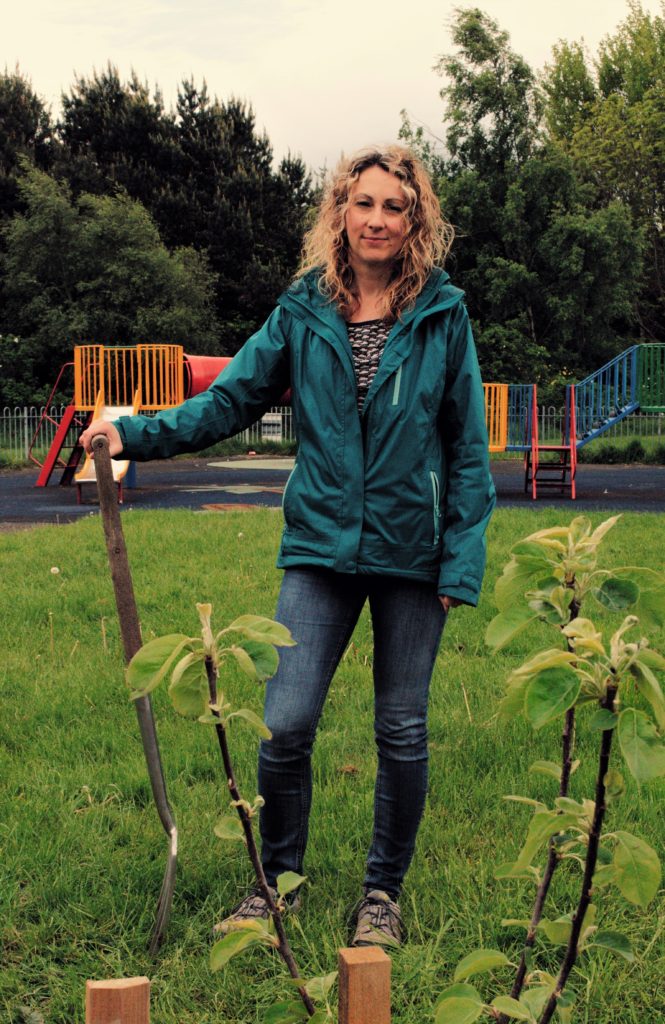
Abi
Meetings
To begin with, the growers meet each other not in their gardens but through their screens. In late spring 2021, when the leaves of the apples unfurl, I begin to meet a group of them for a weekly online drawing class. I parcel up packages of notebooks, pencils and charcoal and send them out in the post. Each week we sit down at our computers and learn how to really look at our trees. Our pencils echo the gentle serrated edges of the leaves. Our charcoal smudges across the page, giving form and shape to our markings. At the end of the session, we hold up the drawings of our trees to the screen, a small digital orchard taking shape.
We set up a Facebook page, so that we can share photos, ask questions and post updates. At first, the trees show up as brown sticks, planted in dormant wintery gardens. Here is one in a neatly organised front garden, another in a muddy back green, another surrounded by a group of happy but cold gardeners. And then, in a flurry of spring, the buds appear, and the growers’ comments are punctuated with an increasing number of exclamation points.
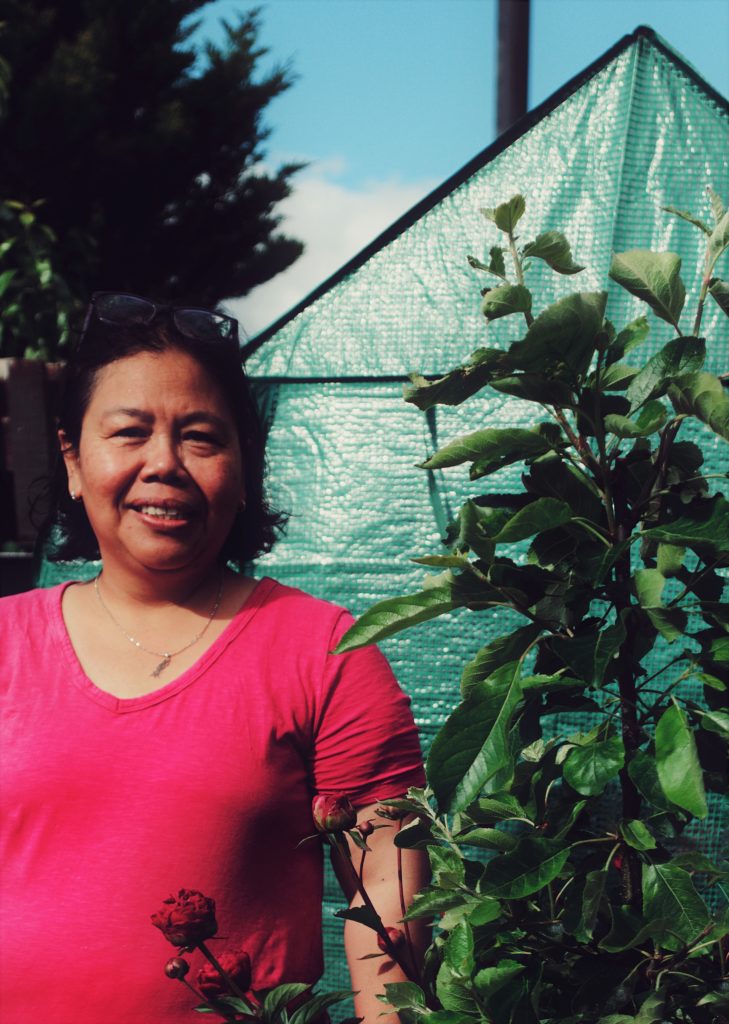
Cindy
Later, we begin to meet in person. On a warm September day, a small group of the growers meet on a piece of land by the shoreline, where two of the Neighbouring Orchard trees are planted. There, we light a small bonfire, and gather round it while I show the group how to make drawing charcoal from the winter prunings of their apple trees. It is a jewel of a day, filled with laughter and a buoyant sense of lightness. We make the charcoal in old, round sweetie tins. The prunings are packed in, brown and twiggy, and nestled into the flames of the fire. When they are ready, I lift them out and we impatiently wait for them to be cool enough to handle. With gloved hands, I open the still toasty tin, and laugh out loud as the small group gasp at the sight of transformation. Our prunings are now sticks of velvet black charcoal – ready to be picked up in fingertips and dragged across a piece of paper, a rock, or the tarmacked pavement. Everything feels heightened, and as I leave, I feel a dull ache form at my temples, my brain unaccustomed to this much joy.
160 trees have been planted. And each of these trees is looked after by either an individual, a family, a group of colleagues or neighbours. I have met many of them, some in passing as they collect their trees, others for long conversations over cups of coffee. Many of them I stop and say hello to on the street, others I have only talked to by email or through Facebook posts. It is a source of great happiness to find points of connection with so many people, to share with them this desire to plant and grow. There are other growers whom I have never met, and for them their connection to their trees, and to this wider artwork, remains private. This is no matter; to plant the tree is enough.
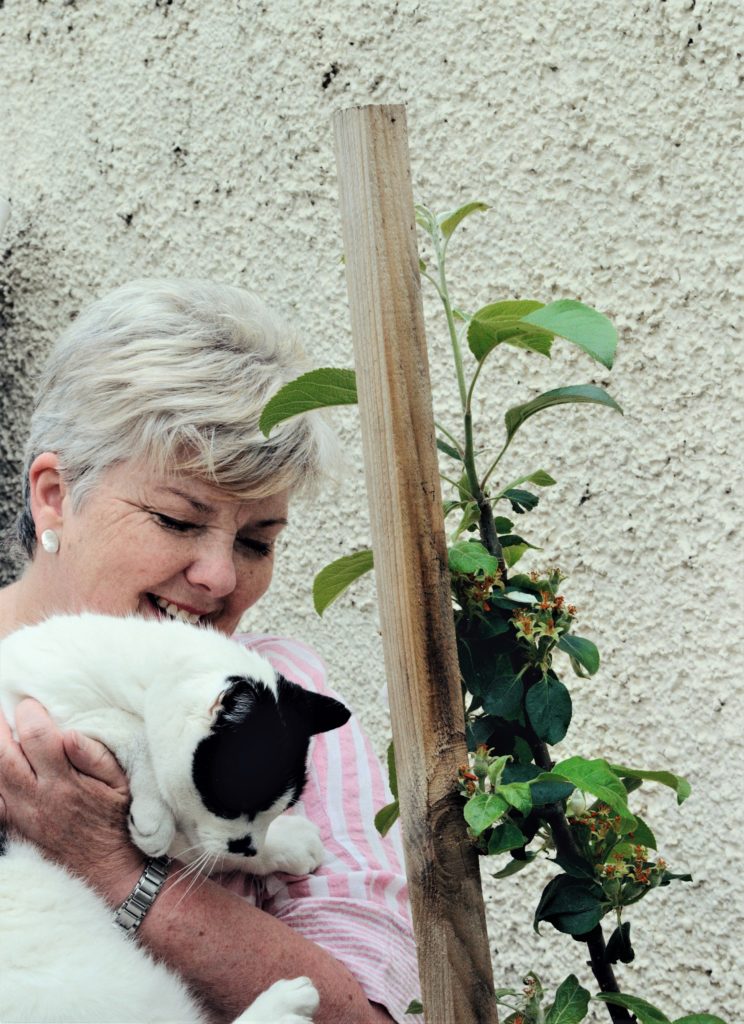
Helen
Earth, Tarmac, Sea
It is rough land: a strip of earth, a stretch of tarmac to house the bins, a tumble of defensive boulders and beyond them – the sea. Alongside his neighbours, Robin has begun to tend to this land, planting fruit trees and bushes. They are some of the most coastal trees of The Neighbouring Orchard. Robin sits on the wooden steps which link his garden to this patch of ground and gestures to what he and his neighbours have created.
“Well sadly it’s a short-term thing. I mean climate change and rising sea levels are inevitable and this will be underwater here. This is only going to be for thirty, forty years or so. It’s a good time for an apple tree but it’s not as long as it could be. And it is sad to think of that… Our house, all the forecasts are that it won’t be able to survive fifty years… It definitely doesn’t feel like a safe thing. I don’t know when people are going to start realising. It feels like we’re walking into this thing going, ah yeah, but it’s a nice day today.”
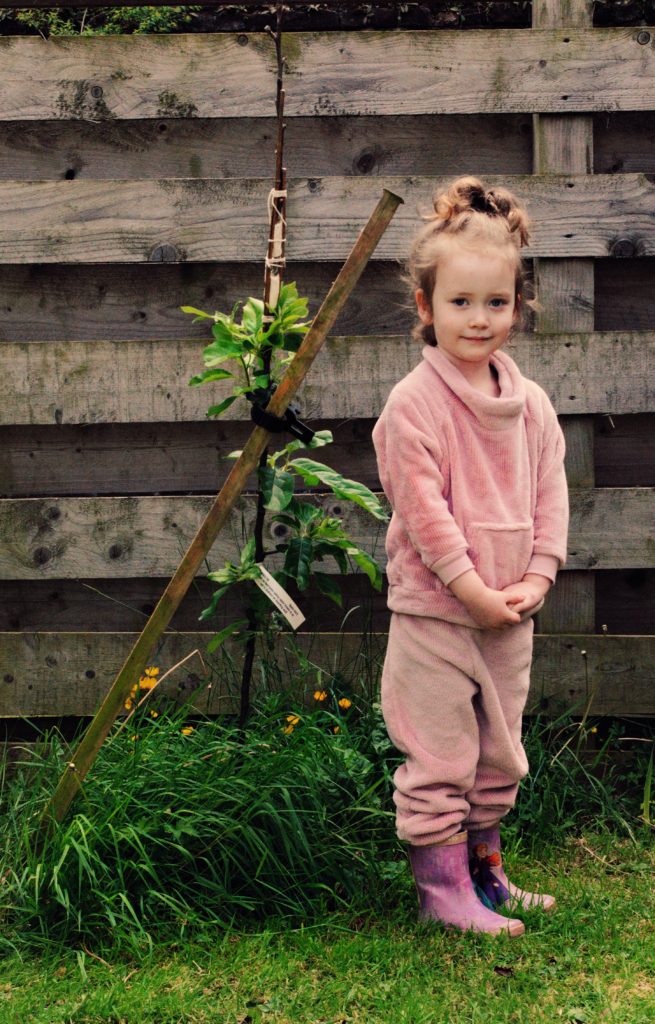
Islay
The neighbours who have lived here for decades have watched tidal surges swoop over the rocks. The garden, hopes Robin, in all its rootedness, “helps a little bit against that…This space, it feels really nice to be doing something. It’s still quite a long period for a garden.”
And when the waters rise further, “Those apples can be grafted, they can move on, they can be in different places.” He gestures inland to an imagined, future orchard, “These were the trees that were by Eastfield.”
It is a strange place to occupy, holding hope for the future of the trees, whilst also acknowledging the inevitable loss of ground.
“I hope that they can withstand the sea and that they’ll be a place where we can sit under, where we can make things together with the apples that we grow. And it’s not just them, it’s a lot more than them, so I’m imagining fruit bushes round here. Picnics, hanging out, just being together. Maybe there’ll be a hammock between a couple of trees at some point. A welcoming space.”
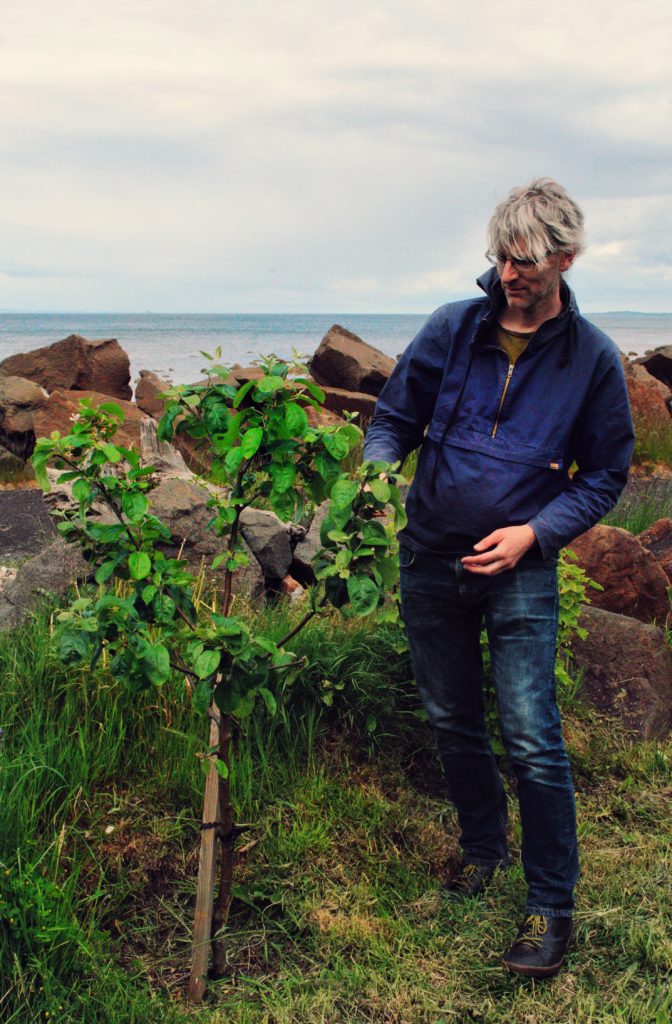
Robin
*
The book that accompanies ‘The Neighbouring Orchard’ is to be released on 1 September. More information about the project and the book’s launch and sale can be found via Annie Lord’s website.